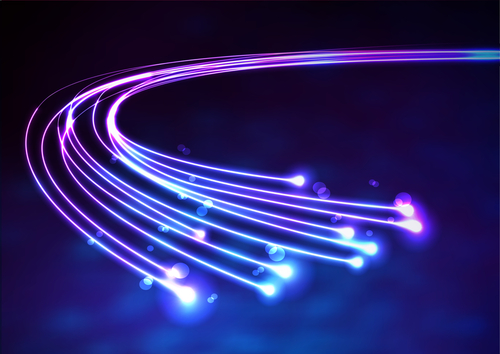
Researchers Set Fiber Optic Speed Record of 57 Gbps Using VCSEL Technology

A research team at the University of Illinois have reached a new milestone in fiber optic data transmission. The group, headed by Dr. Milton Feng, demonstrated an optical communications system based on VCSEL (Vertical Cavity Surface Emitting Laser) technology that reached 57 Gbps. This represents a significant improvement over the previous record of 40 Gbps. The recorded throughput rate of 57 Gbps with Dr. Feng’s team is not the fastest optical transmission speed ever recorded; the distinction lies with a team at University College London. The team demonstrated a system with throughput of approximately 1.125 terabits per second. The rate recorded by the University College London team was achieved with a highly optimized lab prototype in which multiple transmitters and a single receiver were directly connected to one another. The new system operates through fiber optic cable and uses technology that has already been demonstrated to function successfully at distance. Although VCSEL components have been in commercial use for over 15 years, Dr. Feng and his team have succeeded in further advancing VCSEL beyond previous limits. Several aspects of the VCSEL-based system mark it as a ground-breaking achievement. Not only was data transmitted and received over fiber at unprecedented speeds, but it was done totally without transmission error, and at room temperature. Even at temperatures as high as 185 degrees Fahrenheit (85 degrees C), the researchers were able to sustain a data rate of 50 Gbps. Dr. Feng notes that it is extremely difficult to reach high data rates at elevated temperatures. “That’s why data centers are refrigerated and have cooling systems,” he says. “For data centers and for commercial use, you’d like a device not to carry a refrigerator. The device needs to be operational from room temperature all the way up to 85 degrees without spending energy and resources on cooling.” Dr. Feng expects the speed advantage of the new technology to lead to its widespread use in data centers. He also anticipates that it will be extensively employed in aircraft communications systems, because, as he says, “the fiber-optic wires are much lighter than copper wire.” To learn more about advances in optical communications technology or to speak to a representative about our optical transceiver product offering, please contact us.






